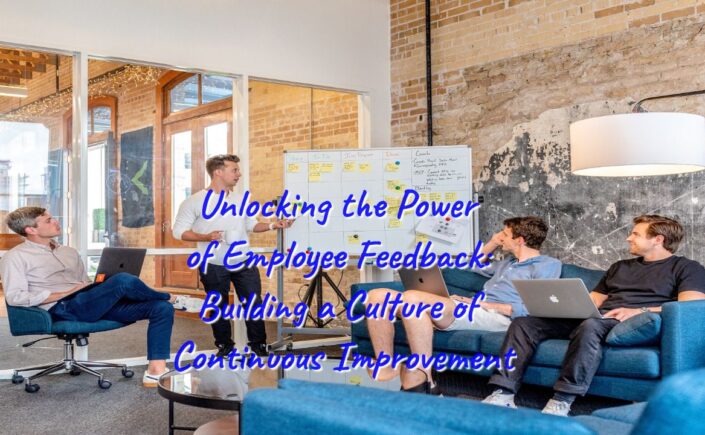In today’s dynamic and rapidly changing business landscape, organizations are realizing the critical importance of employee feedback in driving growth, innovation, and success. Employee feedback serves as a valuable tool for organizations to identify areas of improvement, enhance employee engagement, and foster a culture of continuous improvement. By unlocking the power of employee feedback, businesses can gain a competitive edge and achieve sustainable growth. This article explores the significance of employee feedback and provides insights into building a culture of continuous improvement.
Creating a Safe and Supportive Feedback Environment

One of the fundamental prerequisites for unlocking the power of employee feedback is creating a safe and supportive environment where employees feel comfortable sharing their thoughts, ideas, and concerns. When employees trust that their feedback will be valued and heard without fear of retribution, they are more likely to provide honest and constructive feedback. Organizations can foster such an environment by implementing open-door policies, encouraging two-way communication, and establishing feedback mechanisms such as suggestion boxes, anonymous surveys, paystubs, or regular feedback sessions. Furthermore, leaders and managers should actively listen to employee feedback, acknowledge their contributions, and demonstrate a commitment to acting upon it. By creating a safe and supportive feedback environment, organizations lay the foundation for a culture of continuous improvement.
Leveraging Feedback for Growth and Development
Employee feedback not only helps organizations identify areas for improvement but also plays a crucial role in individual growth and development. Regular performance evaluations, 360-degree feedback, and continuous feedback loops enable employees to receive insights into their strengths, weaknesses, and areas of improvement. By providing constructive feedback and guidance, organizations empower their employees to develop new skills, enhance their performance, and reach their full potential. Moreover, feedback should not be limited to top-down communication; encouraging peer-to-peer feedback and cross-functional feedback loops can facilitate knowledge sharing and collaboration, fostering a culture of learning and development within the organization.
Taking Action on Feedback for Meaningful Change

While collecting employee feedback is essential, the true power lies in taking meaningful action based on that feedback. Organizations must prioritize reviewing, analyzing, and synthesizing feedback to identify recurring themes, patterns, and areas of improvement. This process allows businesses to prioritize the most impactful changes and develop action plans to address them. Communication plays a vital role in this stage, as employees need to be informed about the actions taken based on their feedback and the rationale behind them. Implementing feedback loops to provide updates on progress and outcomes demonstrates that feedback is valued and acted upon. By taking action on feedback, organizations signal their commitment to continuous improvement and create a culture that values employee contributions.
In conclusion, unlocking the power of employee feedback is crucial for building a culture of continuous improvement within organizations. By creating a safe and supportive feedback environment, leveraging feedback for growth and development, and taking meaningful action based on feedback, organizations can tap into the valuable insights of their employees. This not only enhances employee engagement and satisfaction but also drives innovation, productivity, and overall organizational success. By embracing employee feedback as a strategic asset, businesses can adapt, evolve, and thrive in today’s competitive business landscape.
